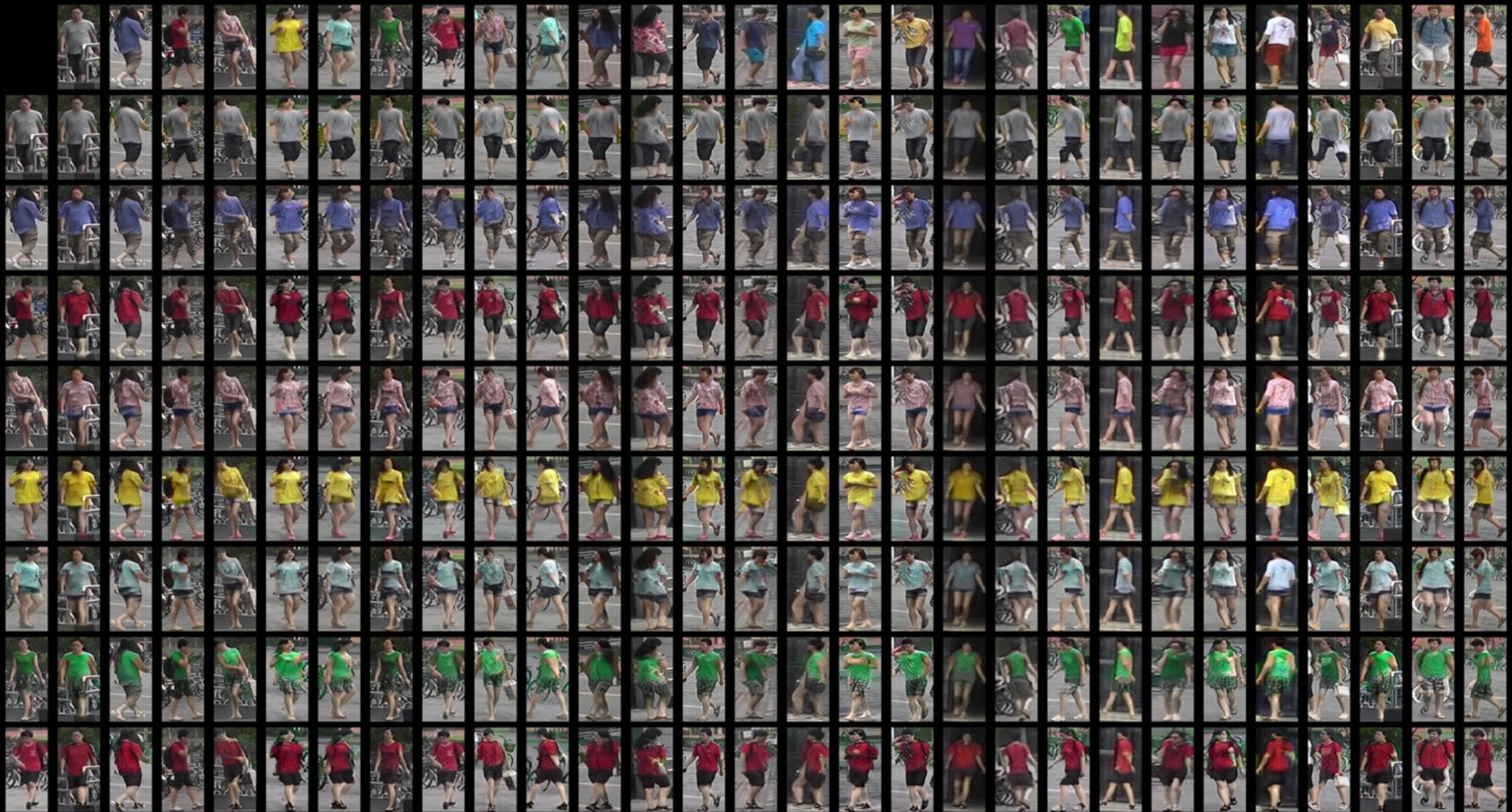[Paper] [YouTube] [Bilibili] [Poster]
Joint Discriminative and Generative Learning for Person Re-identification
Zhedong Zheng, Xiaodong Yang, Zhiding Yu, Liang Zheng, Yi Yang, Jan Kautz
In CVPR 2019 (Oral).
- Features
- License
- Prerequisites
- Getting Started
- Tips for Training with Other Datasets
- Citation
- Related Work
We have supported:
- Float16 to save GPU memory based on APEX
- Multiple query evaluation
- Random erasing
- Visualize training curves
- Generate all figures in the paper
Copyright (C) 2019 NVIDIA Corporation.
All rights reserved. Licensed under the CC BY-NC-SA 4.0 (Attribution-NonCommercial-ShareAlike 4.0 International)
The code is released for academic research use only. For commercial use, please contact researchinquiries@nvidia.com.
- Python 3.6
- GPU Memory >= 15G
- GPU Memory >= 10G (for fp16)
- NumPy
- PyTorch 1.0+
- [Optional] APEX (for fp16)
- Install PyTorch from http://pytorch.org/
- Install TorchVision from the source:
git clone https://github.com/pytorch/vision
cd vision
python setup.py install
- [Optinal] You may skip it. Install APEX from the source:
git clone https://github.com/NVIDIA/apex.git
cd apex
python setup.py install --cuda_ext --cpp_ext
- Clone this repo.
git clone https://github.com/NVlabs/DG-Net.git
cd DG-Net/Our code is tested on PyTorch 1.0.0+ and TorchVision 0.2.1+ .
Download the dataset Market-1501
Preparation: put the images with the same id in one folder. You may use
python prepare-market.py # for Market-1501Note to modify the dataset path to your own path.
We provide our trained model. You may download and move it to the outputs.
├── outputs/
│ ├── E0.5new_reid0.5_w30000
├── models
│ ├── best/
Please check the README.md in the ./reid_eval.
Please check the README.md in the ./visual_tools.
You may use the ./visual_tools/test_folder.py to generate lots of images and then do the evaluation. The only thing you need to modify is the data path.
-
FID https://github.com/layumi/TTUR (To evaluate, you need to install
tensorflow-gpu)
You may directly download our trained teacher model from trained model.
If you want to have it trained by yourself, please check the person re-id baseline repository to train a teacher model, then copy and put it in the ./models.
├── models/
│ ├── best/ /* teacher Model for Market-1501
│ ├── net_last.pth /* model file
│ ├── ...
-
Setup the yaml file. Check out
configs/latest.yaml. Change the data_root field to the path of your prepared folder-based dataset, e.g.../Market-1501/pytorch. -
Start training
python train.py --config configs/latest.yaml
Or train with low precision (fp16)
python train.py --config configs/latest-fp16.yaml
Intermediate image outputs and model binary files are saved in outputs/latest.
- Check the loss log
tensorboard --logdir logs/latest
Note the format of the camera id and the number of cameras.
For some datasets (e.g., MSMT17), there are more than 10 cameras. You need to modify the prepariation and evaluation code to read the double-digit camera id.
For some vehicle re-id datasets (e.g., VeRi) having different naming rules, you also need to modify the preparition and evaluation code.
Please cite this paper if it helps your research:
@article{zheng2019joint,
title={Joint discriminative and generative learning for person re-identification},
author={Zheng, Zhedong and Yang, Xiaodong and Yu, Zhiding and Zheng, Liang and Yang, Yi and Kautz, Jan},
journal={IEEE Conference on Computer Vision and Pattern Recognition (CVPR)},
year={2019}
}
Other GAN-based methods compared in the paper: we forked the code and made some changes for evaluatation. Thank authors for their great work.
We would also like to thank to the great projects in person re-id baseline, MUNIT and DRIT.


